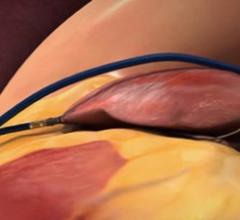May 15, 2021 — A new analysis of the Phase 3 EXPLORER-HCM study evaluating mavacamten, an investigational, first-in ...
May 15, 2021 — The combination heart failure drug sacubitril/valsartan (Entresto) did not significantly reduce the rate ...
May 15, 2021 — Patients with an elevated risk of stroke due to heart rhythm problems, or atrial fibrillation (AFib) ...
Providing exceptional cardiovascular care for patients to achieve the best possible outcomes is the number one goal for ...
May 15, 2021 — The ADAPTABLE trial found no significant differences in cardiovascular events or major bleeding in ...
May 15, 2021 — The anticoagulant apixaban (Eliquis) was not superior to standard of care following transcatheter aortic ...

There is a trend in interventional cardiology that is now being called “renalism,” where patients with poor renal ...
Cardiac positron emission tomography (PET) is growing in popularity among cardiologists because it provides the ability ...
May 14, 2021 — The U.S. Food and Drug Administration (FDA) is advising patients and caregivers to keep any consumer ...
May 14, 2021 — Abbott is recalling a subset of Assurity and Endurity pacemakers built using specific manufacturing ...
May 13, 2021 — The Centers for Disease Control and Prevention (CDC) just released a new statement relaxing the ...
When performing radiofrequency (RF) ablation to treat cardiac arrhythmia, medical professionals must balance the safety ...

The mitral valve anatomy is extremely complex, which has caused many challenges for transcatheter mitral valve ...
Tom Jones, M.D., director, cardiac catheterization laboratories, Seattle Children’s Hospital, and principle investigator ...
May 13, 2021 — Estimates of excess deaths, defined as the number of persons who have died from all causes, above the ...
Change Healthcare Cardiology Hemodynamics is an integrated hemodynamic monitoring system for monitoring vital signs and ...
May 13, 2021 — PolyVascular, leading the effort to improve children's lives with a novel polymeric transcatheter valve ...
May 12, 2021 — Abbott recently announced its new interventional imaging platform powered by Ultreon 1.0 Software, has ...
May 12, 2021 — According to the British Heart Foundation, heart and circulatory diseases cause more than a quarter (27 ...


 May 15, 2021
May 15, 2021















